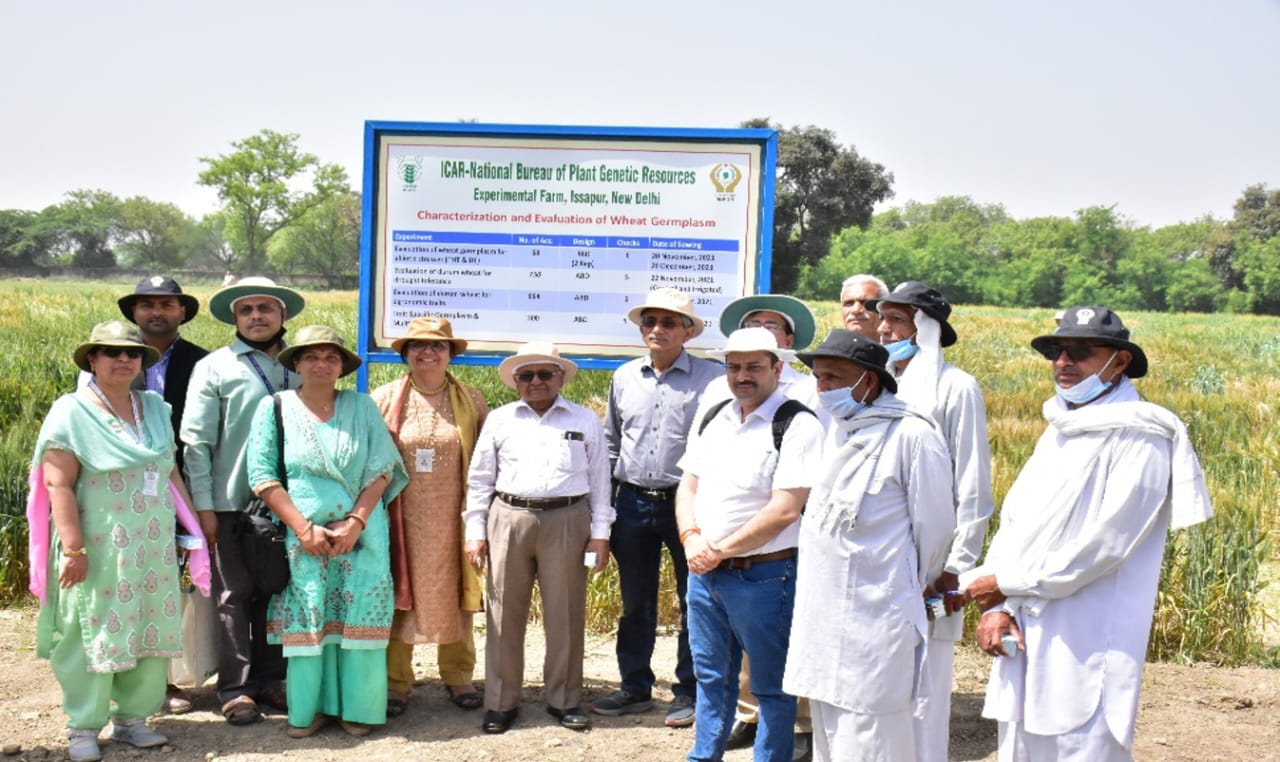
Climate-Smart Wheat Publish Date : 12/09/2025
Climate-Smart Wheat: How Old Varieties Are Saving Farmers Money — and Winning Over Consumers
Wheat, the grain that feeds more than a third of the world’s population, is at the center of a quiet revolution in India. Facing the twin challenges of climate change and rising food demand, the country has launched a nationwide effort to unlock hidden traits in its vast store of indigenous wheat varieties. This mega mission is being coordinated by Dr. G.P. Singh (Director, ICAR-NBPGR), co-coordinated by Dr. Sundeep Kumar, Principal Scientist (ICAR-NBPGR) and supported by Dr. Sanjay Kalia (Scientist F, DBT).

For decades, India’s wheat research and productivity gains were driven largely by varieties sourced from international institutes. These introductions played a vital role during the Green Revolution, lifting the country from scarcity to self-sufficiency. But as climate stress, new diseases, and changing consumer demands put pressure on production, it has become clear that reliance on external sources alone is no longer enough. The future lies in the country’s own genetic wealth—landraces conserved for decades in the National Gene Bank. These traditional varieties, shaped by centuries of cultivation across diverse agro-climatic regions, hold immense potential that has remained underutilized.
The current mission is designed to tap into that treasure. Backed by the Department of Biotechnology (DBT), Government of India, more than 7,000 wheat lines have been assembled and are being tested across 20 locations in India’s major wheat-growing zones against various biotic and abiotic stresses and quality traits. These include both indigenous collections and varieties preserved over generations by farming communities.
Some of these traditional wheats may not deliver the highest yields on their own, but they carry valuable natural strengths—resilience against drought, tolerance to heat, and resistance to devastating rust diseases. When used in modern breeding programs, these hidden strengths can be combined with the productivity of improved cultivars, giving rise to new varieties that perform better under today’s increasingly harsh conditions.

Field trials have already revealed promising results. Many of the old varieties show remarkable ability to withstand fungal infections like rusts and spot blotch, allowing farmers to reduce dependence on costly pesticides and fungicides. Others continue to produce reliable harvests even when summers turn unusually hot or rainfall becomes erratic. Such resilience translates into lower cultivation costs, reduced risks of crop failure, and more stable incomes for farming families.
But resilience is only part of the story. Today’s wheat improvement efforts are also looking toward the market, where consumer preferences are shifting toward healthier and more nutritious food. Several of these landraces contain naturally higher levels of iron, zinc, and protein compared to commercial varieties. This makes them ideal for developing nutrient-rich flour, multigrain breads, and value-added products that meet the growing demand of urban and health-conscious consumers. By aligning farmer-friendly resilience with consumer-focused nutrition, these new varieties promise benefits across the food chain.
Till date, the identification of promising wheat lines had relied mainly on field-level evaluations conducted under diverse environments. Superior lines were recognized largely through visual screening of traits such as disease resistance, drought tolerance, and yield stability. While this approach provided valuable insights, it did not capture the hidden genetic diversity within the germplasm.
Now, the effort is moving a step further into the molecular era. More than 6,700 wheat genotypes have already been earmarked for detailed study using SNP arrays, and resequencing of 200 Indian wheat lines is planned to provide a molecular roadmap of India’s wheat diversity. These advanced studies aim to uncover precise genetic variations, offering a much clearer picture of the unique strengths hidden in India’s traditional wheats. Importantly, this knowledge will provide the base material for the development of new, improved varieties that combine resilience, productivity, and nutritional quality.
The project’s efforts are already feeding into breeding pipelines. Promising lines have been supplied to the National Genetic Stock Nursery, where they will form the backbone of future wheat varieties adapted to India’s harsh conditions.
Thus, by combining traditional wisdom preserved in landraces with modern genomics, we are building climate-resilient, market-ready, and nutrient-rich wheat for the future. For millions of farmers across India, these breakthroughs could mean not only higher yields but also wheat that withstands extreme weather, lowers cultivation costs, and finds favor with consumers seeking healthier food. The solutions to tomorrow’s wheat challenges—and tomorrow’s consumer demands—are hidden in the fields of yesterday.”


